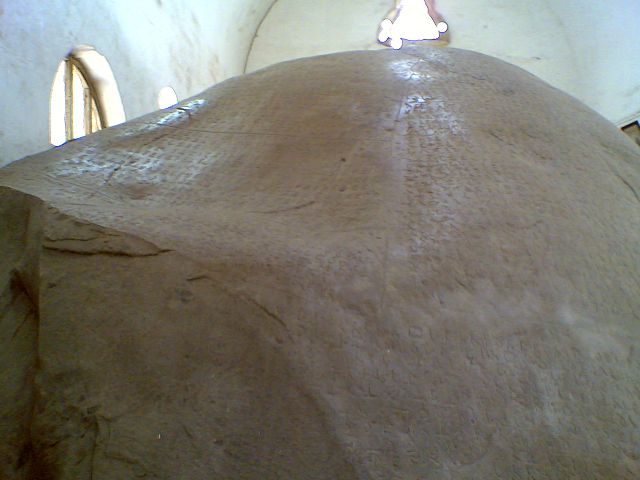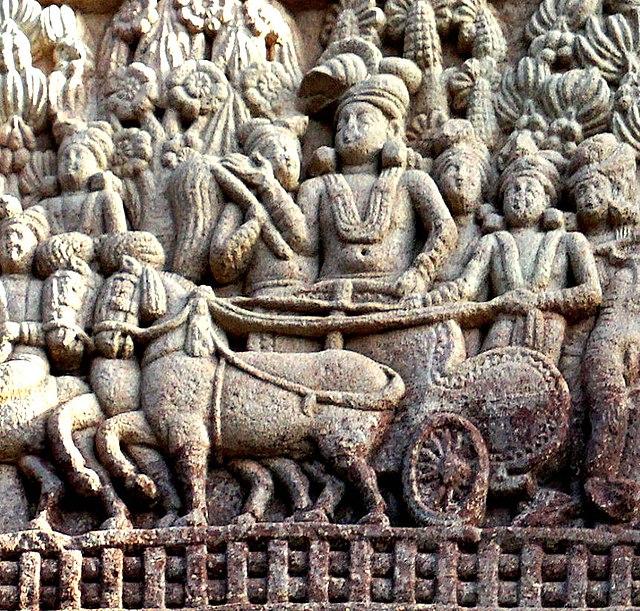The Major Rock Edicts of Indian Emperor Ashoka refer to 14 separate major Edicts of Ashoka which are significantly detailed and represent some of the earliest dated rock inscriptions of any Indian monarch. These edicts are preceded chronologically by the Minor Rock Edicts.
Ashoka's Rock Edict at Junagadh
The Dhauli Major Rock Inscription of Ashoka. The front is shaped as an elephant. Dhauli, Khordha district of Odisha, India.
The Kandahar Greek Edict of Ashoka is a portion of a Major Rock Edict in Greek recovered in Kandahar, Afghanistan, in 1963.
"Aṃtiyako Yona Rājā" (𑀅𑀁𑀢𑀺𑀬𑀓𑁄 𑀬𑁄𑀦 𑀭𑀸𑀚𑀸, "The Greek king Antiochos"), mentioned in Major Rock Edict No.2, here at Girnar, Gujarat, India. Brahmi script.
Ashoka, popularly known as Ashoka the Great, was the third Mauryan Emperor of Magadha in the Indian subcontinent during c. 268 to 232 BCE. His empire covered the largest part of the Indian subcontinent, stretching from present-day Afghanistan in the west to present-day Bangladesh in the east, with its capital at Pataliputra. A patron of Buddhism, he is credited with playing an important role in the spread of Buddhism across ancient Asia.
A c. 1st century BCE/CE relief from Sanchi, showing Ashoka on his chariot, visiting the Koliyas at Ramagrama.
Ashoka's Major Rock Edict at Junagadh contains inscriptions by Ashoka (fourteen of the Edicts of Ashoka), Rudradaman I and Skandagupta.
King Ashoka visits Ramagrama, to take relics of the Buddha from the Nagas, but in vain. Southern gateway, Stupa 1, Sanchi.
The Major Rock Edict No.13 of Ashoka, mentions the Greek kings Antiochus, Ptolemy, Antigonus, Magas and Alexander by name, as recipients of his teachings.







